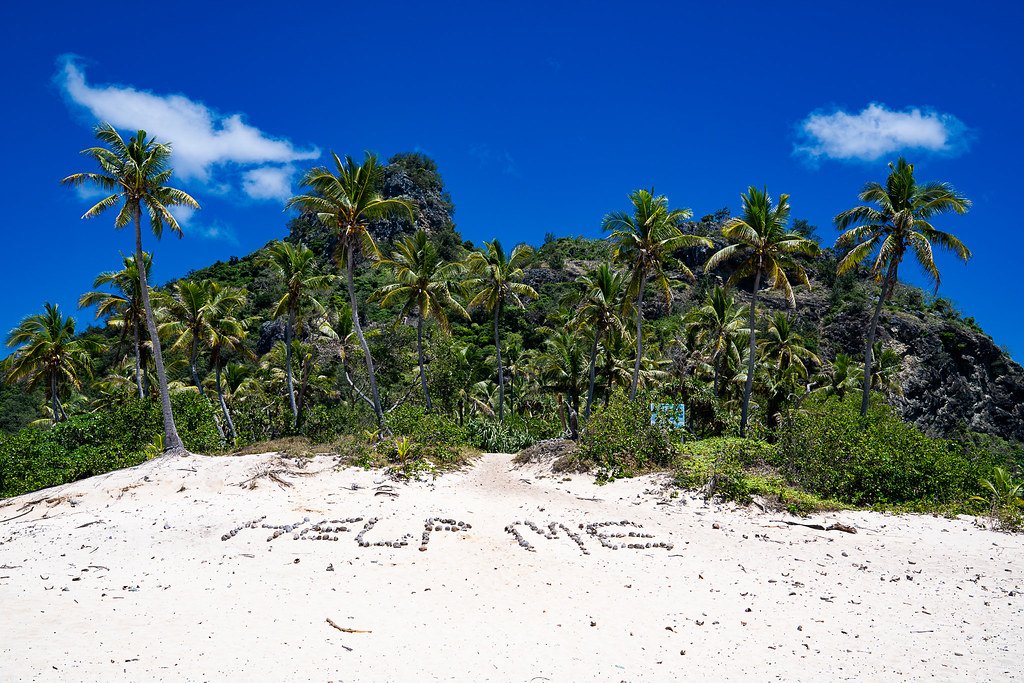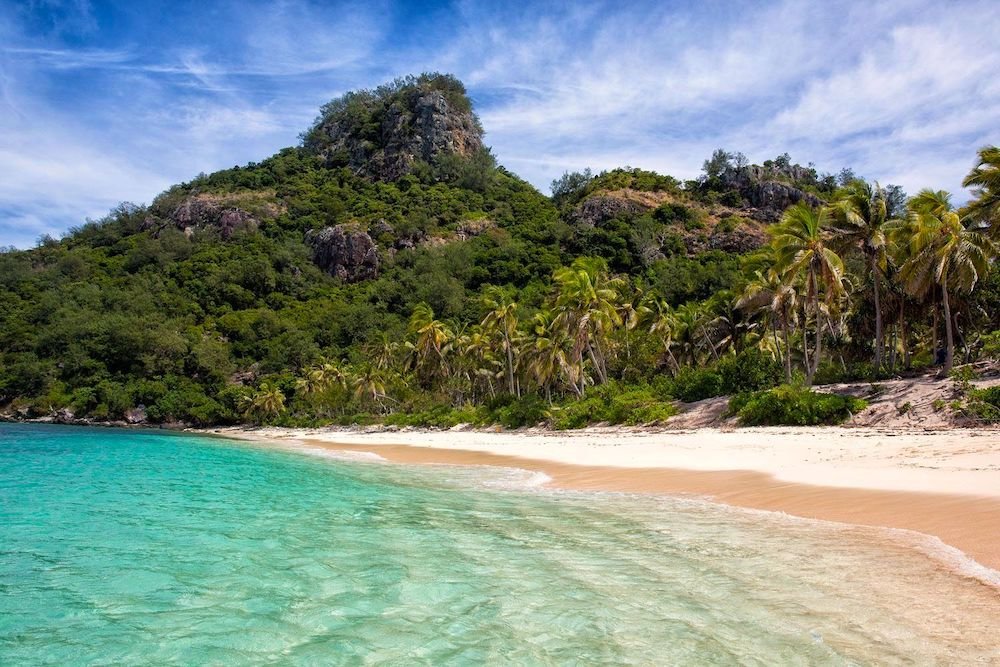
Nestled in the heart of the South Pacific, Monuriki Island emerges as a pristine gem among the Mamanuca Islands of Fiji.
Uninhabited and preserved in its natural state, Monuriki offers an unparalleled experience of solitude and natural beauty.
This small, yet captivating island has captured the imaginations of travelers worldwide, not only for its breathtaking landscapes but also as the filming location for the acclaimed movie “Cast Away.”
Despite its fame, Monuriki remains a place of serene beauty, offering visitors a unique glimpse into untouched island ecosystems.
The importance of Monuriki Island extends beyond its cinematic legacy.
It holds a special place in Fijian culture, embodying the rich natural heritage and the deep-seated respect the Fijian people have for their environment.
The island’s untouched nature makes it a living laboratory for conservation efforts and a sanctuary for those looking to escape the hustle and bustle of modern life.
The objective of this article is to equip potential visitors with all they must know before setting foot on Monuriki’s sandy shores.
From its geographical splendor and the diverse wildlife that calls it home to the rich cultural tapestry that surrounds it, we aim to provide a comprehensive guide to Monuriki Island.
Whether you’re a solo adventurer seeking solitude, a photographer in pursuit of the perfect shot, or simply a curious soul drawn to the allure of island life, this article will serve as your gateway to understanding and appreciating the majestic beauty of Monuriki Island.
Geographical Location and Access
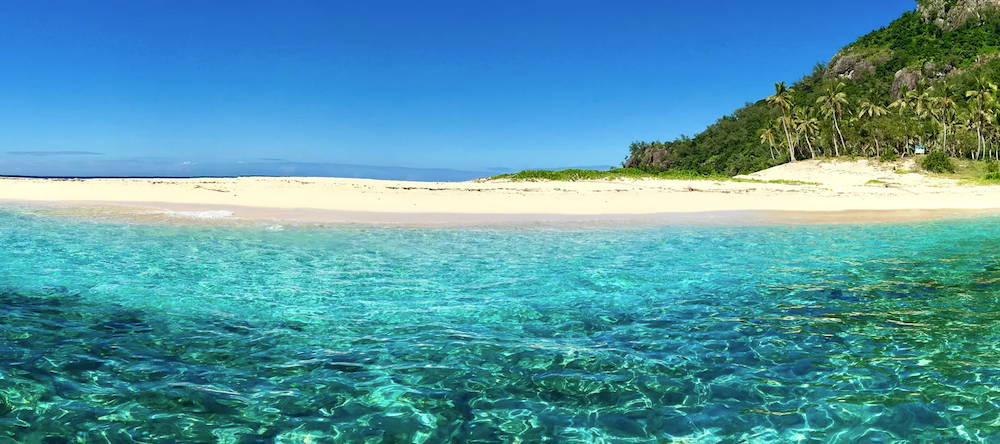
Monuriki Island is a secluded paradise situated in the Mamanuca Islands, a stunning archipelago off the western coast of Viti Levu, Fiji’s largest island.
The Mamanuca Islands are renowned for their crystal-clear waters, vibrant coral reefs, and diverse marine life, making them a coveted destination for tourists from around the globe.
Among these jewels, Monuriki stands out for its untouched natural beauty and the tranquility it offers.
This island’s relatively small size and uninhabited status contribute to a sense of exclusivity and intimacy with nature.
How to Get There: Travel Options from the Main Islands of Fiji
Reaching Monuriki Island is an adventure in itself, offering visitors various travel options that cater to different preferences and budgets.
The journey typically begins at Nadi International Airport, located on the island of Viti Levu. From Nadi, the most common way to get to the Mamanuca Islands is by boat.
Several operators offer boat transfers from Port Denarau, with trips ranging from 45 minutes to a couple of hours, depending on the specific destination within the Mamanuca Islands and the type of vessel chosen.
For those seeking a quicker, more scenic route, helicopter and seaplane transfers are available, providing breathtaking aerial views of the archipelago and a memorable entrance to Monuriki Island.
Best Times to Visit: Weather Considerations, Tourist Seasons
The best time to visit Monuriki Island hinges on Fiji’s tropical climate, which is divided into the wet and dry seasons.
The dry season, running from May to October, offers sunny days, lower humidity, and cooler temperatures, making it the ideal time for outdoor activities and exploration.
This period also aligns with the peak tourist season, so visitors can expect more company on the more popular islands in the Mamanuca group.
The wet season, from November to April, brings higher temperatures and more frequent rainfall, which can affect travel plans and accessibility.
However, this is also the time when the islands are less crowded, and the landscape is lush and vibrant, offering a different kind of beauty. Regardless of the season, Monuriki Island‘s allure remains constant, inviting visitors to discover its untouched splendor at any time of the year.
The Natural Environment
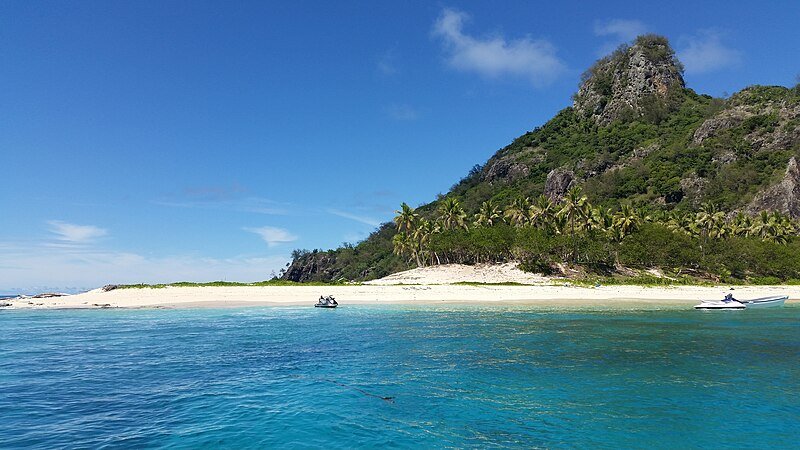
The lush vegetation of Monuriki Island is a testament to the rich biodiversity of the South Pacific.
The island is home to a variety of endemic plants, some of which are found nowhere else in the world.
These include several species of palms, ferns, and flowering plants that thrive in its fertile soil and warm climate. Conservation efforts on Monuriki are crucial to protecting these unique ecosystems.
Initiatives led by local and international organizations focus on habitat restoration, invasive species control, and the promotion of sustainable tourism practices.
These efforts ensure that the island’s verdant landscapes remain a sanctuary for its flora and a testament to the importance of environmental stewardship.
Fauna: Wildlife, Including Native and Migratory Species
Monuriki Island is not only a haven for plant life but also for a diverse array of wildlife.
Despite its small size, the island supports a variety of bird species, including native and migratory birds.
The Fiji petrel, a critically endangered bird, is among the most notable species that visitors might catch a glimpse of. In addition to birds, Monuriki hosts a range of terrestrial and marine wildlife.
The conservation areas on the island are dedicated to protecting these species and their habitats, ensuring the survival of Fiji’s precious biodiversity.
Marine Life: Coral Reefs, Snorkeling, and Diving Spots
The waters surrounding Monuriki Island are a marine paradise, renowned for their crystal-clear visibility and vibrant coral reefs.
These underwater ecosystems support a vast array of marine life, including colorful fish, sea turtles, reef sharks, and a multitude of invertebrates.
Snorkeling and diving are among the most popular activities for visitors, offering up-close encounters with the island’s underwater inhabitants.
The coral reefs around Monuriki are not only a major attraction but also a focus of conservation efforts.
Protecting these reefs involves coral planting, monitoring of water quality, and educating visitors on responsible snorkeling and diving practices to minimize human impact on these fragile ecosystems.
Historical and Cultural Significance
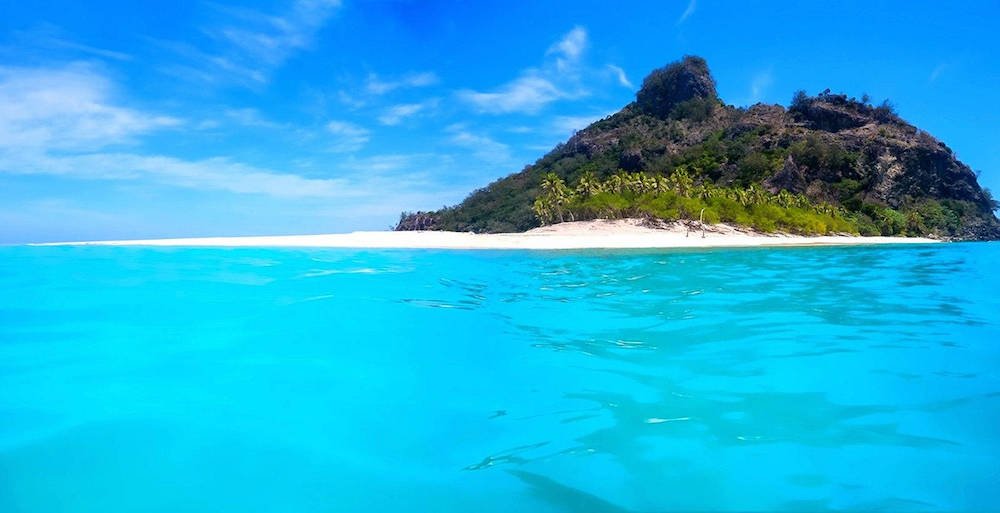
Monuriki Island holds a storied past that spans both pre-colonial and colonial eras, reflecting the rich history of Fiji and its people.
Before the arrival of European explorers in the 17th century, the islands of Fiji were inhabited by Melanesian and Polynesian peoples, including Monuriki.
These early inhabitants lived in harmony with the land, relying on its abundant resources for sustenance and utilizing traditional practices that respected the natural world.
The colonial period brought significant changes, including the introduction of new economic activities and governance structures.
Despite these transformations, Monuriki and the surrounding islands have retained much of their natural beauty and cultural heritage, serving as a testament to the resilience and enduring spirit of the Fijian people.
Cultural Heritage: Significance to the Fijian People
The cultural heritage of Monuriki Island is deeply interwoven with the traditions and values of the Fijian people.
The island is considered a significant part of Fiji’s cultural landscape, embodying the connection between the land and its people.
Traditional practices, such as fishing, navigation, and the art of storytelling, are still revered, with the island serving as a symbol of these enduring customs.
Monuriki’s untouched nature also plays a crucial role in contemporary Fijian culture, offering a space for reflection and connection with ancestral traditions, reminding the Fijian people and visitors alike of the importance of preserving cultural identity in the face of modernization.
Conservation Efforts: Preserving Natural and Cultural Heritage
Conservation efforts on Monuriki Island are paramount, not only in protecting its environmental ecosystems but also in safeguarding its cultural heritage.
Initiatives led by local communities, in collaboration with national and international organizations, focus on preserving the island’s natural and cultural resources.
These include protecting historical sites, promoting traditional knowledge and practices, and ensuring that tourism development is sustainable and respectful of cultural values.
By preserving Monuriki’s heritage, these efforts contribute to the broader goal of maintaining Fiji’s cultural integrity, offering future generations the opportunity to learn from and appreciate their rich history and traditions.
Activities and Attractions
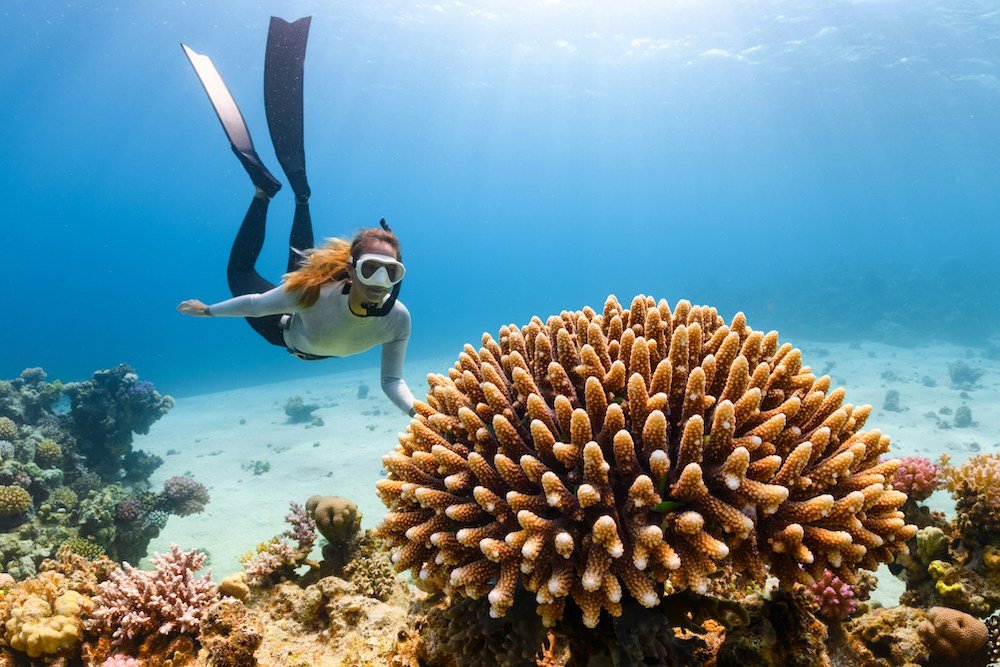
Guided Tours: Exploring the Island with Expert Guides
Exploring Monuriki Island with an expert guide is an invaluable experience for those looking to delve deeper into the island’s natural beauty and rich history.
Guided tours offer visitors a unique opportunity to learn about the island’s ecosystems, cultural significance, and conservation efforts.
Guides, often locals with extensive knowledge of the area, provide insights into Monuriki’s flora and fauna, share stories of the island’s past, and highlight the efforts being made to preserve this pristine environment.
Whether you’re interested in the island’s biodiversity, cultural heritage, or cinematic fame, a guided tour can enrich your understanding and appreciation of Monuriki.
Water Activities: Snorkeling, Kayaking, and Swimming
The crystal-clear waters surrounding Monuriki Island are perfect for a variety of water activities, making it a paradise for enthusiasts of all levels.
Snorkeling is a must-do activity, offering a glimpse into the vibrant underwater world of coral reefs teeming with marine life.
Kayaking provides a serene way to explore the coastline, allowing for up-close encounters with the island’s marine and bird life.
For those looking for a more leisurely experience, the gentle waters near Monuriki are ideal for swimming, offering a refreshing escape in a stunning natural setting.
Hiking: Trails and Viewpoints
For the adventurous, Monuriki Island boasts several hiking trails that lead to breathtaking viewpoints.
These trails, ranging in difficulty, offer panoramic views of the island and the surrounding ocean, making the hike a rewarding experience.
Along the way, hikers can observe the island’s diverse ecosystems, from dense tropical forests to rugged coastal cliffs.
The tranquility and natural beauty of these trails make them a perfect activity for nature lovers looking to immerse themselves in the serene environment of Monuriki.
Photography: Capturing the Island’s Beauty, Tips for Photographers
Monuriki Island is a photographer’s dream, offering a myriad of landscapes and scenes to capture.
From the vibrant hues of the coral reefs to the lush greenery of the inland forests and the dramatic sunsets over the ocean, Monuriki provides endless opportunities for stunning photographs.
Photographers are encouraged to respect the natural environment and wildlife, keeping a safe distance and minimizing their impact.
Tips for capturing the essence of Monuriki include utilizing the golden hours for soft, natural lighting, experimenting with different perspectives, and being patient to capture the perfect shot.
Travel Tips and Essentials
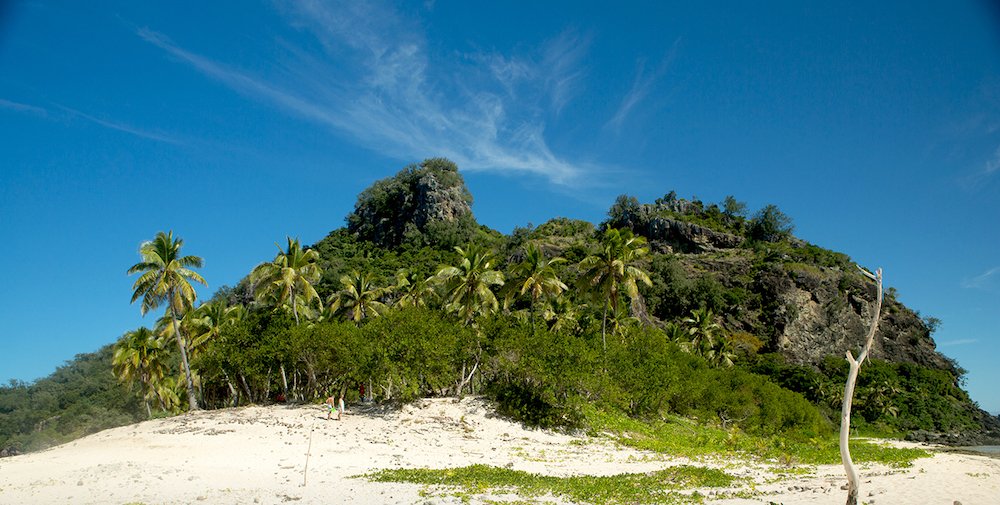
What to Bring: Essentials for a Day Trip or Longer Stay
When preparing for a trip to Monuriki Island, packing the right items is crucial for ensuring a comfortable and enjoyable experience.
For day trippers, essentials include sunscreen, hats, and sunglasses to protect against the strong tropical sun.
Additionally, bring ample water to stay hydrated and snacks for energy, as there are no facilities on the island.
For those planning to snorkel or swim, snorkeling gear, a swimsuit, and a towel are must-haves.
If your visit extends beyond a day, include a portable charger, a first-aid kit, and any personal medications.
Lightweight, breathable clothing is recommended for the humid climate, along with sturdy shoes for hiking.
Lastly, remember to pack all your trash and belongings when you leave, helping to preserve the island’s natural beauty.
Safety Tips: Staying Safe in a Remote Location
Monuriki Island, while stunning, is remote and uninhabited, which means visitors must take extra precautions to ensure their safety.
Always inform someone of your travel plans, including expected return times, especially if you’re exploring the island independently.
Be aware of the tides when swimming or snorkeling, as currents can be strong. Stick to marked trails if hiking to avoid getting lost.
In case of emergency, have a means of communication, such as a fully charged mobile phone or a satellite phone, as coverage can be limited.
Being prepared and aware of your surroundings will ensure a safe and enjoyable visit to Monuriki.
Respect for Nature: Guidelines for Responsible Tourism
Visiting Monuriki Island comes with a responsibility to minimize impact on its pristine environment.
Follow the principles of leave-no-trace by taking all garbage with you and not leaving anything behind.
Avoid touching or stepping on coral reefs, which are vital but fragile ecosystems.
When observing wildlife, maintain a respectful distance to avoid disturbing animals in their natural habitat.
Stick to established paths and areas to prevent erosion and damage to plant life.
Supporting local conservation efforts, either through donations or by participating in guided tours that contribute to the island’s preservation, is also a great way to give back.
By respecting these guidelines, visitors play a vital role in ensuring the sustainability of Monuriki Island’s natural and cultural heritage for future generations.
Accommodation and Dining Options
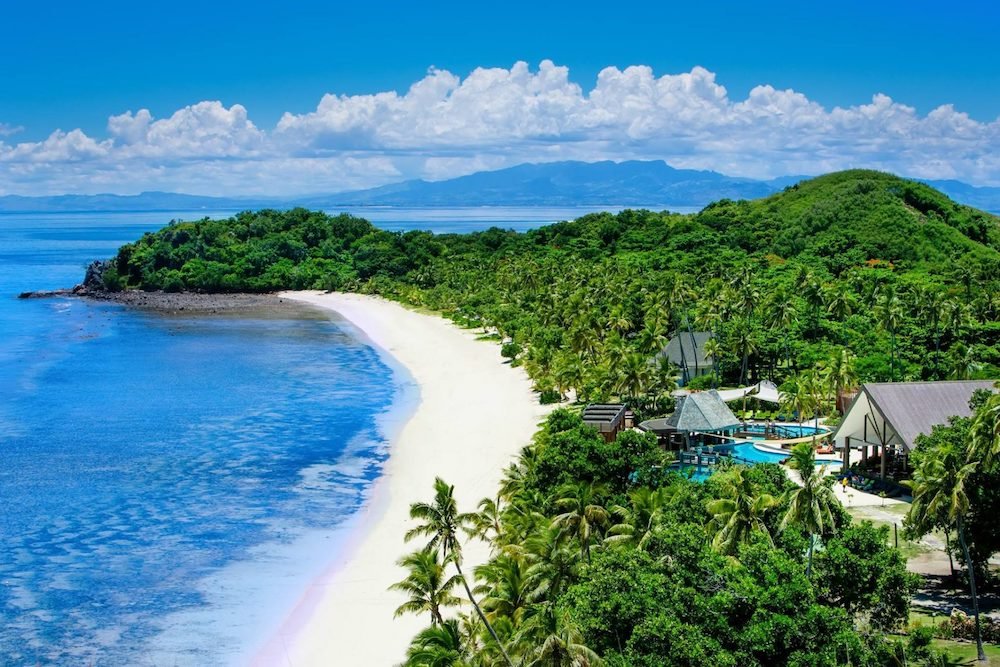
Staying Near Monuriki: Resorts and Accommodations in the Mamanuca Islands
While Monuriki Island itself is uninhabited and offers no accommodations, the surrounding Mamanuca Islands present a variety of lodging options to suit every preference and budget.
From luxurious resorts offering overwater bungalows to more modest beachside hotels, visitors can choose the perfect base for exploring Monuriki and the Mamanuca archipelago.
Many of these accommodations provide direct tours to Monuriki, making it easy for guests to visit the island while enjoying the comfort and amenities of their resort.
Popular choices include family-friendly resorts with a range of activities for all ages, eco-friendly retreats that emphasize sustainability, and secluded hideaways perfect for romantic getaways.
Booking in advance is recommended, especially during peak tourist seasons, to secure your ideal accommodation.
Dining Options: Local Cuisine, What to Try, and Where
The Mamanuca Islands are not only a paradise for beach lovers but also for food enthusiasts looking to indulge in local Fijian cuisine.
Dining options vary from resort restaurants offering international menus to smaller, local establishments serving traditional Fijian dishes.
A must-try is the lovo feast, a traditional Fijian meal cooked in an earth oven, featuring succulent meats, fish, and vegetables infused with a unique smoky flavor.
Seafood lovers will delight in the fresh catches of the day, prepared with local herbs and spices.
For a casual dining experience, beachside cafes and bars offer light snacks and refreshing cocktails with stunning ocean views.
Exploring the dining options on the Mamanuca Islands is an adventure in itself, providing a taste of the rich culinary heritage of Fiji.
Conclusion
Monuriki Island, a jewel in the Mamanuca Islands archipelago of Fiji, offers a sanctuary of natural beauty, rich cultural heritage, and unforgettable experiences.
From its stunning geographical location, accessible via a scenic journey from Fiji’s main islands, to its vibrant natural environment, Monuriki is a testament to the pristine beauty of the South Pacific.
The island’s flora and fauna, alongside its breathtaking marine life, present a paradise for nature lovers and adventure seekers alike.
Our exploration highlighted the historical and cultural significance of Monuriki Island, emphasizing its importance to the Fijian people and the efforts to preserve its natural and cultural heritage.
The array of activities and attractions, from guided tours that delve into the island’s history to water activities and hiking trails that showcase its natural wonders, ensures that every visitor can find their own unique connection to this remarkable place.
Travel tips and essentials underscore the importance of preparation and respect for the environment, ensuring that visitors can safely enjoy all that Monuriki has to offer while contributing to the conservation of its pristine conditions.
Although the island itself does not provide accommodations or dining, the nearby Mamanuca Islands offer a range of options to suit every taste and budget, enhancing the overall experience with local cuisine and comfortable stays.
In conclusion, visiting Monuriki Island is more than just a trip to a beautiful destination; it’s an opportunity to immerse oneself in the breathtaking beauty of Fiji, to learn about and participate in the preservation of a unique ecosystem, and to experience the warmth and richness of Fijian culture.
Whether you’re drawn to Monuriki by its cinematic fame, its natural beauty, or the chance to escape into a world of tranquility and untouched landscapes, the island promises an experience that will linger in your memories long after you leave its shores.
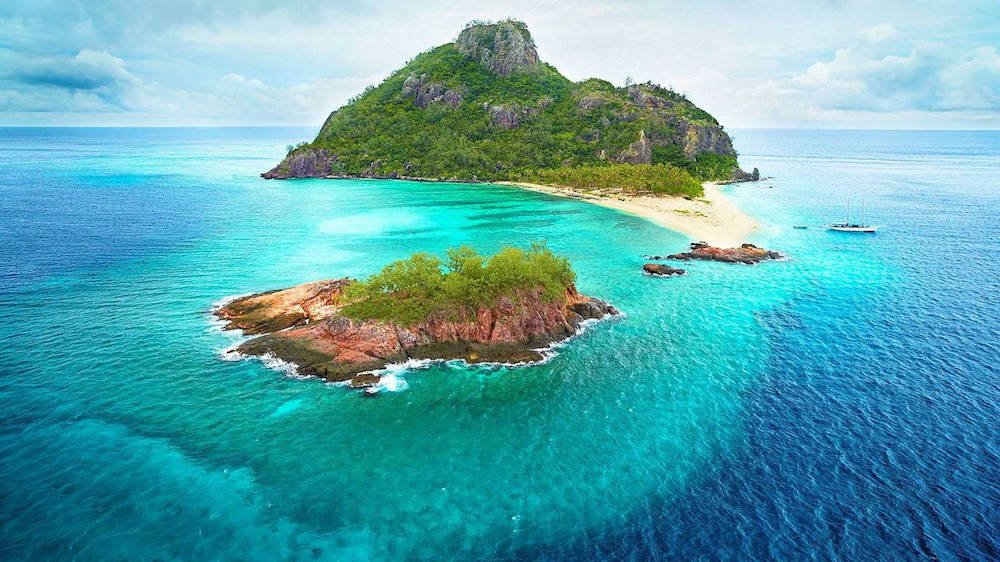
FAQ’s About Monuriki Island:
Is Monuriki Island the Same as the “Cast Away” Island?
Yes, Monuriki Island gained worldwide fame as the filming location for the Hollywood movie “Cast Away,” starring Tom Hanks.
The island served as the backdrop for this survival story, captivating audiences with its stunning natural beauty.
Despite its cinematic fame, Monuriki remains uninhabited and is preserved in its natural state, offering a real-life escape into the pristine environment that enchanted viewers on the big screen.
Can You Stay Overnight on Monuriki Island?
No, overnight stays are not permitted on Monuriki Island as it is uninhabited and lacks the facilities to accommodate visitors overnight.
The preservation of the island’s natural environment is a priority, and as such, tourism is carefully managed to minimize impact.
Visitors can explore Monuriki during the day via tours from nearby islands in the Mamanuca archipelago, where a variety of accommodation options are available.
What Activities Can You Do on Monuriki Island?
Monuriki Island offers a range of activities for visitors, including snorkeling in its clear waters to explore vibrant coral reefs, kayaking around its picturesque coastline, and hiking to viewpoints that offer breathtaking panoramic views of the surrounding islands.
Photography enthusiasts will find endless inspiration in the island’s natural beauty, from its lush vegetation to its stunning beachscapes.
Guided tours are also available, providing insights into the island’s natural and cultural significance.
How Do You Get to Monuriki Island?
The most common way to reach Monuriki Island is by boat from Fiji’s main islands, specifically from Port Denarau on Viti Levu.
There are several tour operators that offer day trips to Monuriki, providing transport as part of guided tours.
For those seeking a more unique perspective, helicopter or seaplane transfers can be arranged, offering an aerial view of the Mamanuca Islands en route to Monuriki.
What Should You Bring When Visiting Monuriki Island?
When visiting Monuriki Island, it’s essential to be well-prepared for a day in a remote, natural setting.
Essentials include sunscreen, a hat, and sunglasses to protect against the sun, as well as sufficient water and snacks. If you plan to engage in water activities, bring snorkeling gear, a swimsuit, and a towel.
Wear comfortable clothing suitable for the warm, humid climate and sturdy shoes if you intend to hike. Remember to carry all your trash back with you to help preserve the island’s pristine condition.
Are There Any Conservation Efforts on Monuriki Island?
Yes, there are several conservation efforts underway on Monuriki Island to protect its unique ecosystems and cultural heritage.
These initiatives include habitat restoration, controlling invasive species, and promoting sustainable tourism practices.
Visitors are encouraged to respect the natural environment and participate in responsible tourism to ensure the preservation of Monuriki’s beauty for future generations.
What Is the Best Time to Visit Monuriki Island?
The best time to visit Monuriki Island is during the dry season, from May to October, when the weather is cooler and less humid, making outdoor activities more enjoyable.
This period also coincides with the peak tourist season, so planning ahead is advisable.
The wet season, from November to April, offers a different experience, with lush landscapes and fewer visitors, though travel plans may be affected by occasional rain.
